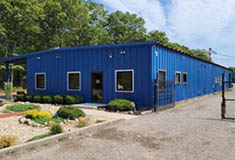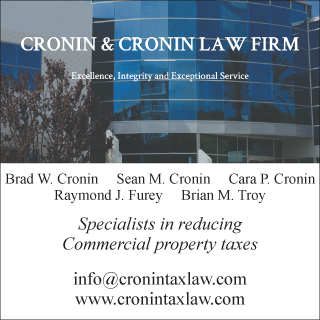A look into air rights in New York: Part I - whose air is it anyway? - by Bernie Kennedy
“Air rights” are the rights an owner of real estate has to develop his property based upon the floor area ratio (FAR) of the zoning lot on which the property sits. FAR is defined as the total floor area on a zoning lot divided by the lot area of that zoning lot. Conversely, a building can contain floor area equal to the lot area multiplied by the FAR of the zoning district in which the lot is located. For example, an owner of property with a footprint of 50,000 s/f in a district with a FAR of 5.0 could construct a building containing 250,000 s/f of floor area (50,000 s/f x 5.0 = 250,000 s/f).
But what if the owner of the property constructed a building containing less than the allowable floor area, with the result that there are substantial unused air rights associated with the property? Under New York law, those unused rights can be transferred to neighboring sites to allow such sites to be developed to a density greater than what would otherwise be permitted.
This amounts to a win-win for an owner and neighboring developer. The former can sell these air rights (known as “transferrable development rights” or “TDRs”) to the latter for substantial value, sometimes higher than the value of the owner’s land itself because the TDR’s enable developers to build their buildings higher, and those higher floors ordinarily have greater value on a per square foot basis than lower floors; sometimes, substantially higher value.
For instance, in 2005 the Zeckendorf brothers paid $430 a s/f for unused air rights (TDRs) over Christ Church and the Grolier Club at Park Avenue and East 60th St. allowing them to build a 35-story apartment tower on property just west of the Grolier Club on East 60th St. The total amount paid for the air rights in that instance was $39 million, not an insignificant amount. One would expect the value of those same air rights today to be about double that amount.
But things don’t always amount to a win-win between land owners and neighboring developers when it comes to air rights. In a case decided by the NYS Court of Appeals in 1972, the court ruled that a ground lessee under a long-term lease who owned two neighboring parcels could incorporate the unused air rights on the property he leased in determining the density of the building he intended to construct on the neighboring properties he owned.
The owner of the property claimed that his tenant was prohibited from transferring the development rights based upon the “alterations” provision of the lease which provided that no structural alteration, the estimated cost of which was in excess of $25,000, could be made without the prior approval of the landlord. But the court ruled that transferring the air rights to the neighboring property did not amount to an “alteration” of the building as defined in the lease and that the ground lessee/neighboring developer could be considered the “owner” of the property for the purposes of the transfer of TDRs.
In essence, the court ruled that the owner lost the value of its reversionary interest because the lease failed to contain a provision precluding the ground lessee from transferring the air rights to his neighboring properties. The case also suggests, at least, that the ground lessor-owner had not actually lost his development rights by signing the lease; rather, that as a result of the ground lease, both he and the ground lessee could be considered “owners” for the purposes of the TDRs and that the lessee succeeded in his case because he exercised his right to transfer the development rights first. In the words of one of the Judges in the case: “In short, the laurel wreath went to the one first to exercise the right.”
So it is clear then that there several things owners, developers, brokers and real estate lawyers need to keep in mind about air rights and their transferability, especially when entering into ground leases. First, of course, is to understand the existing development rights associated with property that is intended to be purchased and/or developed based upon three factors: the FAR, the lot size and the density of the any building that has already been constructed on the property. Second, especially in cases where a property is being purchased for development purposes, to know the status of development rights on neighboring properties that could be the source of valuable development rights based upon the same three factors. And finally, in any instance you may be leasing property to another where that property has excess development rights associated with it, unless it is the intention to negotiate away the TDRs, to make certain the lease is drafted carefully to preclude the lessee from transferring those development rights.
In the next installment of this article on Air Rights, we’ll answer the question: What happens when two billionaire developers owning neighboring properties can’t make a deal over air rights associated with an iconic New York City property that has been declared an historic landmark?
Bernie Kennedy is a co-managing member (partner) at Bond, Schoeneck & King, Garden City, N.Y.
Suffolk County IDA supports expansion of A&Z Pharmaceuticals


The evolving relationship of environmental consultants and the lending community - by Chuck Merritt
When Environmental Site Assessments (ESA) were first part of commercial real estate risk management, it was the lenders driving this requirement. When a borrower wanted a loan on a property, banks would utilize a list of “Approved Consultants” to order the report on both refinances and purchases.










.jpg)